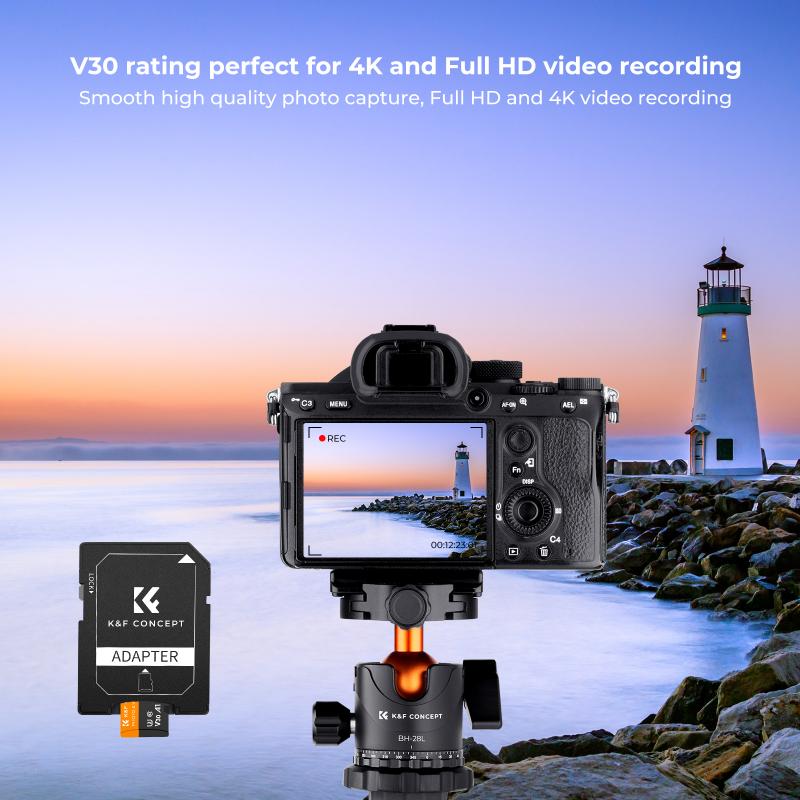How To Transfer Micro Sd Card Data Switch?
Transferring data from a micro SD card can be a straightforward process, but there are important considerations and steps to ensure the data moves safely and efficiently, particularly when dealing with devices like the Nintendo Switch. This process can range from transferring game data to moving saved media files, and each requires a slightly different approach. Let's delve into how you can handle this transfer smoothly.
Understanding the Basics of Micro SD Cards and the Switch

First, it's crucial to understand that the Nintendo Switch uses micro SD cards to expand its storage capabilities. These cards can store game data, downloadable content, and other media files, making them an essential component for any Switch owner looking to maximize their device's storage.
Selecting the Right Card

Before you even consider transferring data, ensure that the micro SD card you're using, or planning to use, meets the necessary requirements. The Nintendo Switch is compatible with micro SD, micro SDHC, and micro SDXC cards. Ideally, you should use a card with a UHS-I speed rating and a minimum transfer speed of 60-100 MB/s for optimal performance.
Preparing for Data Transfer

Preparation involves backing up existing data and ensuring you have the right tools:
1. Backup Your Data: Before transferring, it is vital to have a backup of your data in case something goes wrong. You can backup Nintendo game data to the cloud if you have a Nintendo Switch Online subscription, and for other media, simply copy the files to a computer.
2. Check for System Updates: Make sure your Nintendo Switch system is updated to the latest version to avoid any compatibility issues with the SD card.
3. Tools Required: You will need a computer with an SD card reader or an external micro SD card adapter.
Steps to Transfer Data from Your Old Micro SD Card to a New One

Step 1: Power Off the Nintendo Switch
Before removing the micro SD card from your device, always turn off your Nintendo Switch completely. Go to the "Power Options" from the main menu, and then select "Turn Off". Removing the card while the Switch is on can lead to data corruption.
Step 2: Remove the Original Micro SD Card
Take out the existing micro SD card from the back of the Nintendo Switch. Place it in your computer's card reader or use an adapter if needed.
Step 3: Transfer Game and Other Data to Your Computer
- Access the Card: Once connected to your computer, open the file explorer to access the contents of the micro SD card.
- Copy the Data: Create a new folder on your computer and copy all files from the SD card into this folder. This step ensures that you have a secure backup of all contents should anything happen during the process.
Step 4: Insert the New Micro SD Card
Once you've backed up your data onto your computer, eject the old card and replace it with the new micro SD card into the card reader.
Step 5: Format the New Micro SD Card
- Formatting Needs: Before the new card can be used with your Nintendo Switch, it must be formatted. This can be done through your computer. Ensure you format the card in exFAT as it works best with the Switch.
- Eject the Card Properly: After formatting, safely eject the new card from your system.
Step 6: Transfer the Data to the New Micro SD Card
- Copy Files Back: Reconnect the newly formatted micro SD card to your computer and copy the files you previously backed up into this card.
- Safe Eject: After the transfer is complete, safely eject the card.
Step 7: Insert the New Micro SD Card into the Switch
- Power and Check: Insert the new card into your Switch and turn the system back on. Confirm that your data is accessible and that the Switch recognizes the new card.
Additional Considerations
Managing Game Save Data
While most game data is stored on the micro SD card or internal storage, game saves are typically stored in the internal memory of the Switch. Therefore, these are not moved during this process. However, they can be backed up to the cloud with a Nintendo Switch Online subscription, allowing you to restore them if necessary.
Downloadable Content and Updates
After transferring the data, ensure any games that had downloadable content or updates still work correctly. Sometimes, re-downloading or re-installing certain updates might be necessary if they appeared corrupted post-transfer.
In Case of Error
If you encounter an error during the transfer, ensure no files were corrupted during copying. Most errors are related to corrupted data or improper ejecting of the card from the computer or the Switch. If specified data does not appear or load properly, attempt the transfer process again from the backed-up data.
Exploring Backup Options
Having regular backups via the cloud or external hard drives can save considerable time in the long run. Consider using Nintendo's online save data backup feature if frequently swapping or upgrading storage.
Transferring data from a micro SD card for use with the Nintendo Switch can be straightforward if the steps are carefully followed. By understanding each part of the process—from selecting the proper card to ensuring all data is correctly backed up and transferred—you minimize the risk of data loss and maximize efficiency. Following this guide will not only save time but also preserve your valuable game progress and media files. As technology continues to evolve, getting accustomed to these processes will help ensure that device upgrades and maintenance are no longer an intimidating prospect, but rather an opportunity to enhance your overall gaming experience.
